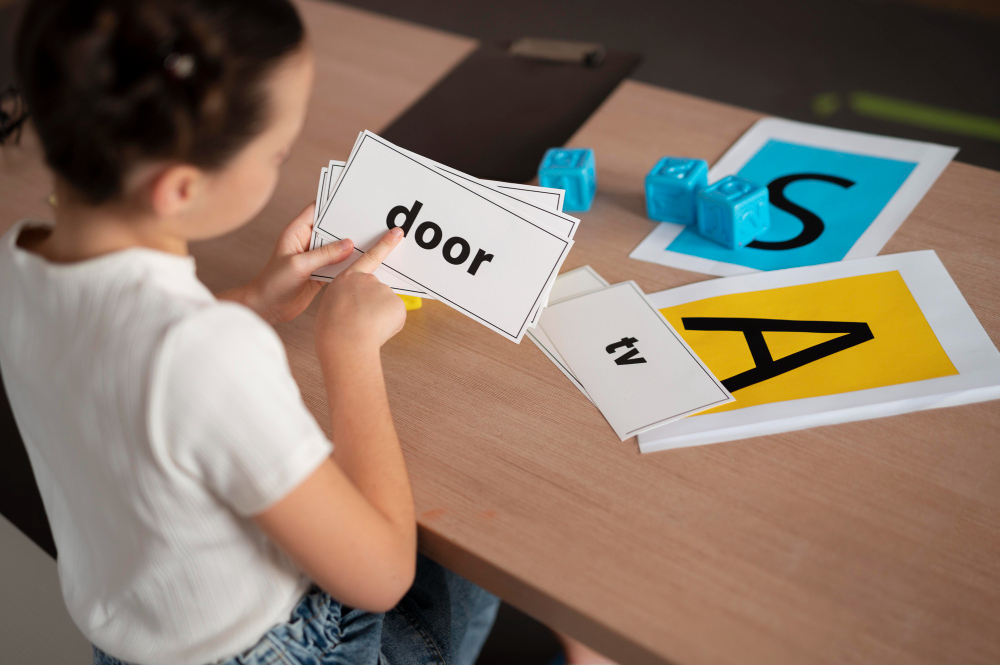Parents and schools are crucial to modelling healthy communication and speech development in children. Children learn to tackle everyday situations through fluent communication and coherent speech, putting the onus on parents and schools to reinforce healthy conversation skills through daily activities.
Some Singapore primary school fees are reasonable and private schools focus on speech development for students more than public schools. Here are a few ways in which you can enhance your child’s speech development; please note that these are complementary methods that go hand in hand with any individual treatment plan your child is undergoing:
Nine ways to improve speech development for students:
Make use of eye contact
is one of the best conversational tools because it communicates that you are listening when the student is talking. Not looking at the person and evading eye contact indicates that what the child says isn’t necessary. Through sustained eye contact, students can better hold conversations during their turns when a peer situation arises. Other children are less likely to interrupt or finish statements for the child if they elicit eye contact. To ensure that your child or the student makes eye contact, teachers and parents need to model and reinforce it.
Reveal the enjoyment you feel while talking to your child
Parents and teachers must support the child’s willingness to communicate when a child or a student is talking. The child may not be coherent or disfluent, so they rely on some affirmation from your end. It would help if you conveyed that you enjoy their talking and are proud of them. Sometimes children fumble or get stuck while narrating stories, but positive statements such as ‘great story’ or ‘I am glad you told me can go a long way in helping them work on their speech.
Face-to-face
Try to position yourself at the child’s eye level when conversing. It ensures healthy eye contact and also establishes suitable spatial proximity while talking. It is also helpful to support the fact that they have your attention and you are listening. When you kneel to listen to your child’s story, it is a way of saying, ‘start now. I am all ears for your great story. It gives confidence to the child.
Be natural and relaxed while speaking to students
Teachers in the best private school in Singapore treat students the way they would treat any adult. They don’t slow their speech to an atypical rate while talking to kids. They are, in fact, quite relaxed and follow an average speech rate while talking. It conveys that there is no pressure on the student to hurry up and that they can take their time to elucidate.
Encourage “thinking time”
When reading a book or playing a game, think before you start. Allow thoughts to flow naturally; this thinking time is healthy and necessary for increased and improved language formulation.
Refrain from finishing the sentence and listen well
Be a good listener when your child is talking. Do not get impatient and finish kids’ sentences if they get stuck. When you complete your child’s sentence for them, you are preventing healthy and independent conversational skills from developing. Doing this sends a message that someone can speak for them when they blunder or get stuck on a word. Use positive reinforcement when your child finally finishes a story after getting stuck.
Ensure transition time before the story narration
Allow children to wait for a little time until post-transition to tell you about anything in particular. A child is dysregulated and cannot pay complete attention to their speech immediately after an activity. For instance, if they have just won a game or finished a day at school, wait until after they wash up and have a snack before they tell you the story. Let them get over the previous moment and focus entirely on telling you the story when they do to ensure better speech.
Take turns to talk while having a conversation
Take taking turns. If a child stutters, it may be difficult for them to try and get into a conversation and get overwhelmed trying to manage multiple conversational partners. Thus, it is essential to have group conversations and model successful speaking turns. Introduce talking turns by having conversations with parents and siblings, and each one takes a turn to speak.
Gently probe
Use gentle probe questions rather than direct drill-type questions during an activity. Instead of the direct line of questioning, you can use words like ‘I wonder what they want….’. This style of questioning naturally elicits conversation and language skills.
Help children to organise their stories
Give structure to your child’s stories to help them organise them. WH questions are key here – What, where, who, etc. Children have a lot of information to share, and thoughts race faster than words from their mouths. It is true for adults as well. They must structure their stories to cover everything. E.g. if the story has multiple parts, start with Where is this story? Who is in this story? What happens in this story? And structure it sequentially into parts.
For more blogs click here.
